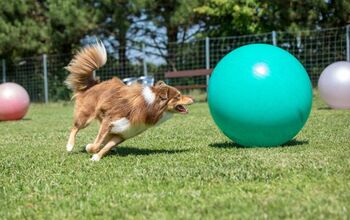Should Your Dog Be Eating Lectins?

Before we talk about whether your pooch should be eating lectins or avoiding them at all costs, let’s take a look at what exactly this protein is all about.
Lectins are found primarily in plants as well as certain dairy or meat products – particularly those that have been genetically modified (GMO). When they occur in nature, the lectin protects the plant from foraging insects and other critters by making them feel sick and reluctant to revisit it as a future food source. And that explains why they’re more prevalent in modified foods. Growers have figured out how to make their crops pest resistant by splitting the lectin and doubling up on its power to repel various bugs and fungi. It never hurts to take a little time to google your pet food brand to better understand the origin of their ingredients.
When it comes to our dogs, lectins have often been called “anti-nutrients” because in their active form they can block absorption of important nutrients and ultimately migrate to his digestive tract where they result in gassiness or diarrhea. And because lectins can also make your pooch more prone to illness, they can be a serious concern for pet parents of older dogs or those that already have a compromised immune system.
All of this means that lectins are bad for dogs, right? Well, not so fast. Here’s the thing; lectins occur in such a wide range of foods that its hard to completely eliminate it from our pet’s diet. In fact, while almost every food has some amount of lectin in it, its typically not enough to result in any type of serious physical reaction. Additionally, for dogs that are allergic to grains, a lot of those grain-free options use legumes or potato starch to bind the food together and both are high in lectins. But, here’s the most important point of all; lectins are typically eradicated from foods during the cooking process. And that includes the production of dog foods.
So, how do you decide if this protein is something you need to banish from your pet’s plate? Well, consider that many foods that include lectin are also rich in vitamins, fiber, and antioxidants. And that unless your pet suffers from food-related allergies that are exacerbated by certain grains, the nutritional benefits these foods bring to his diet will far outweigh the potential negative impact of lectins. Per the American Kennel Club, if you are concerned that GMOs (common with many grains) could be a problem for your pet, look to foods that contain alternative grains such as barley, oats, quinoa, or buckwheat that are less common and unlikely to be modified.
And if you have a pet with a dodgy digestive system and you want to play it safe, read the ingredients on your pet’s food. Law requires that the ingredients be listed in order of their weight ratio within the formula. To identify the food’s “main” ingredients, look at the first five items listed and you’ll have a pretty good idea as to what it’s made from. If you see ingredients that you know are high in lectins – such as peas, potatoes, or certain grains – you can then make the decision as to whether the food is the right fit for your pet’s unique dietary needs.

Sharing space with three seriously judgy Schnoodles and a feline who prefers to be left alone. #LivingMyBestLife
More by Mary Simpson























